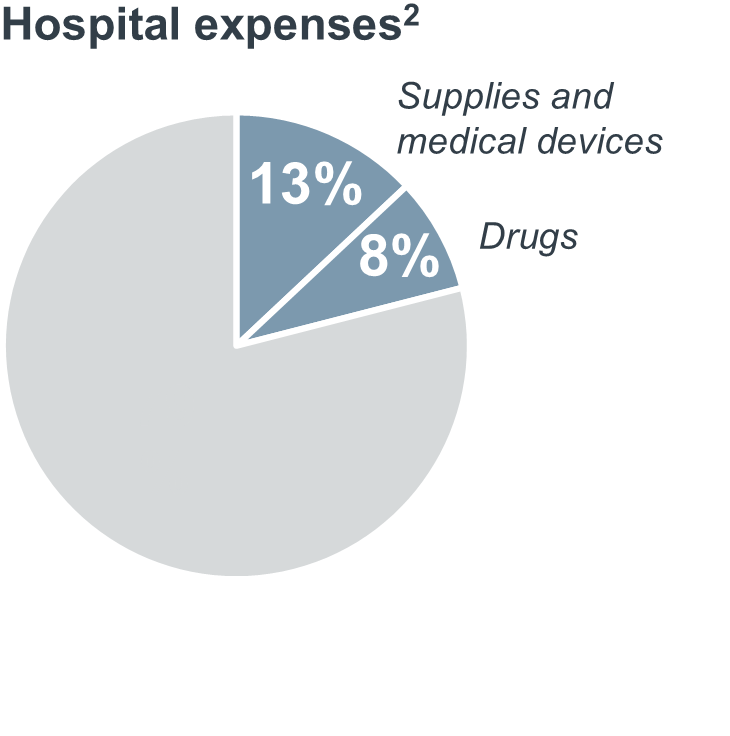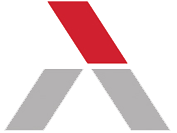Auto logout in seconds.
Continue LogoutRecent tariffs introduced by the Trump administration have added a new layer of complexity to healthcare supply chains. Here's what supply chain leaders should (and shouldn't) do in response.
New tariffs and sudden policy changes add uncertainty to healthcare supply chains
The Trump administration’s policy changes are moving quickly and unpredictably. Since tariffs were first announced in April, multiple executive actions and program shifts have directly affected healthcare costs and funding.
On April 2, 2025, the Trump administration announced a broad 10% tariff on imports from all countries, along with additional penalties for countries running trade deficits with the U.S. Just a week later, the administration paused some of those tariffs for 90 days while raising Chinese import tariffs to 125%. Then, on May 12, 2025, Trump lowered Chinese import tariffs for 90 days to 30%.1
Also on May 12, 2025, Trump signed an executive order calling for drugs to be available for Americans at “most favored nation” drug prices, aligning U.S. prescription costs to the lowest prices paid in other developed nations.
Around the same time, the Department of Government Efficiency launched the “Defend the Spend” initiative, delaying thousands of federal healthcare grant payments by requiring manual review and justification for money requested. These back-to-back changes show just how unstable the current environment is.
Hospitals are already feeling the effects. Supplies and medical devices account for roughly 13% of hospital expenses, while drugs represent another 8%, according to Strata.2
With this level of unpredictability, healthcare leaders face real financial exposure. One week, tariffs are going up. The next, they’re paused — then replaced with new conditions. Healthcare leaders don’t know what the next announcement will bring, which is why proactive planning is no longer optional.

What not to do: Common missteps hospitals should avoid
Some organizations are making decisions that could hurt more than help. One of the biggest mistakes is relying too heavily on domestic manufacturers. While supporting U.S.-based suppliers makes sense in some cases, the pandemic showed how fragile that strategy can be. Many American companies struggled to meet sudden demand when global imports slowed, and similar risks remain today.
Inaction is another risk. Waiting to see where tariffs settle may feel cautious, but it can leave hospital leaders exposed. By the time prices rise or products become scarce, it may be too late to lock in savings or secure new sources.
Panic buying is also a trap that many hospital leaders fall into. In Advisory Board’s recent survey of purchasing leaders in health systems, 38% of respondents said they are already stockpiling devices/supplies and 24% said they are stockpiling drugs. It might seem smart to buy ahead before prices go higher, but many hospitals don’t have the storage space to handle a large influx of supplies. Overbuying leads to waste and cost overruns and can worsen supply shortages across the industry by driving up artificial demand.
What healthcare leaders should do instead
Diversifying your supply chain is one of the most effective short-term moves you can make. Look at where your products are coming from and assess whether a single event — a port strike, a policy change, a storm — could shut down your supply. Work with vendors that operate across multiple regions and have built-in backup plans for disruption.
Now is also the time to go after quick wins in cost savings. Start with contract reviews. Identify any clauses that could expose your organization to tariff-related price jumps. Where possible, renegotiate terms to add protections or increase flexibility. This work doesn’t take months — it's something your team or your group purchasing organization (GPO) can tackle right away.
Standardizing physician preference items is another fast way to manage costs. These products — implants, surgical instruments, and specialty devices — often vary more than they need to. Bringing physicians into conversations early and presenting clear data on quality and cost can help strike the right balance between care and affordability.
External support can make these efforts easier. GPOs and consultants often have real-time insight into market shifts and supply chain risks. They may already have contracts in place that reduce tariff impact, but make sure to confirm whether your organization is fully benefiting.
Technology is another way to stay ahead. AI and contract tools can scan for language tied to pricing increases or contract loopholes. Supply tracking platforms can give early warnings of disruption or demand spikes. These tools help you act before issues turn into emergencies, without overloading your team.
How to talk to your finance team about tariffs
Finance and operations leaders want clarity. Supply chain leaders should be prepared to explain not just what’s happening, but what could happen next. Use specific examples: a device that jumped 15% in cost last week, a contract that doesn’t cover international fees, or a supplier you’ve flagged as high risk.
Outline what your team is doing in response. Show that your team is not waiting around but is actively reviewing contracts, mapping vendor risk, and identifying savings opportunities. CFOs and boards are far more likely to approve fast action if it comes with a clear plan.
It also helps to talk about the cost of delays. If a key supply doubles in price next month or becomes temporarily unavailable, what’s the plan? Could a delay lead to canceled procedures or added labor costs?
Give your finance partners something actionable, such as a 30-day plan, a revised sourcing strategy, or a short list of high-risk categories. When you make the case in plain terms, it's easier for others to get on board.
Advisory Board is a subsidiary of Optum. All Advisory Board research, expert perspectives, and recommendations remain independent.
1 Kuo L, Shepherd C, Li L. U.S., China agree to lower most tariffs for 90 days amid trade talks. The Washington Post. May 12, 2025.
2 American Hospital Association. 2024 Costs of Caring: America’s Hospitals and Health Systems Continue to Face Escalating Operational Costs and Economic Pressures as They Care for Patients and Communities. May 2024.
Don't miss out on the latest Advisory Board insights
Create your free account to access 1 resource, including the latest research and webinars.
Want access without creating an account?
You have 1 free members-only resource remaining this month.
1 free members-only resources remaining
1 free members-only resources remaining
You've reached your limit of free insights
Become a member to access all of Advisory Board's resources, events, and experts
Never miss out on the latest innovative health care content tailored to you.
Benefits include:
You've reached your limit of free insights
Become a member to access all of Advisory Board's resources, events, and experts
Never miss out on the latest innovative health care content tailored to you.
Benefits include:
This content is available through your Curated Research partnership with Advisory Board. Click on ‘view this resource’ to read the full piece
Email ask@advisory.com to learn more
Click on ‘Become a Member’ to learn about the benefits of a Full-Access partnership with Advisory Board
Never miss out on the latest innovative health care content tailored to you.
Benefits Include:
This is for members only. Learn more.
Click on ‘Become a Member’ to learn about the benefits of a Full-Access partnership with Advisory Board
Never miss out on the latest innovative health care content tailored to you.



